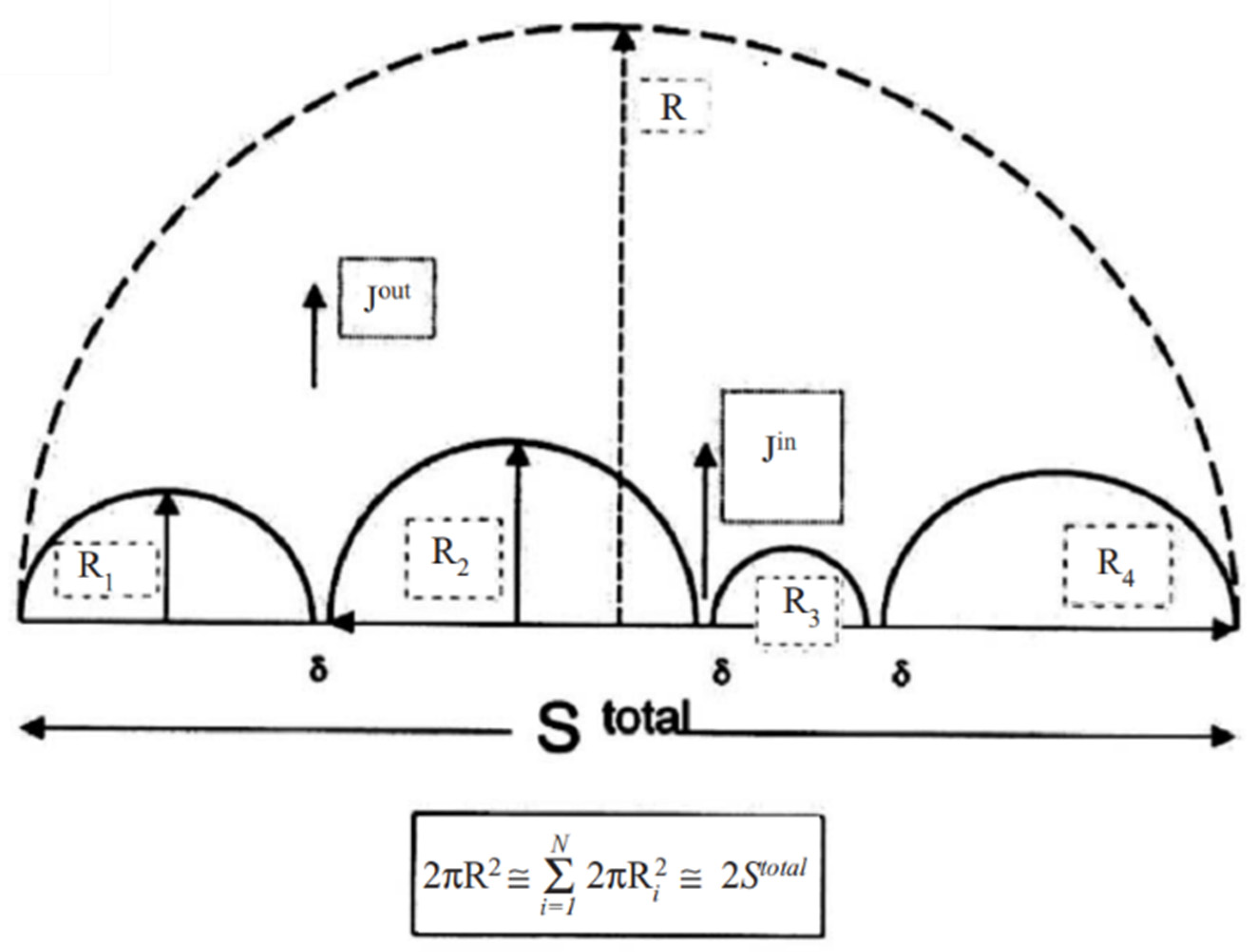A Comparison Between Ripening Under a Constant Volume and Ripening Under a Constant Surface Area
Abstract
Funding
Conflicts of Interest
References
- Cahn, J.W. The kinetics of cellular segregation reactions. Acta Met. 1959, 7, 8. [Google Scholar] [CrossRef]
- Tu, K.N.; Turnbull, D. Analysis of kinetics of boundary diffusion limited cellular precipitation. Scr. Metall. 1967, 1, 173. [Google Scholar] [CrossRef]
- Christian, J.W. The Theory of Transformation in Metals and Alloys, Part 1 Equilibrium and General Kinetic Theory, 2nd ed.; Pergamon Press: Oxford, UK, 1975. [Google Scholar]
- Shewmon, P.G. Transformations in Metals; Indo American Books: Delhi, India, 2006. [Google Scholar]
- Porter, D.A.; Easterling, K.E. Phase Transformations in Metals and Alloys; Chapman & Hall: London, UK, 1992. [Google Scholar]
- Gusak, A.M.; Tu, K.N. Kinetic theory of flux driven ripening. Phys. Rev. B. 2002, 66, 115403. [Google Scholar] [CrossRef]
- Kang, S.-J.L.; Yoon, D.N. Methods for analysing the experimental data of Ostwald ripening. J. Mater. Sci. Lett. 1983, 2, 291–294. [Google Scholar] [CrossRef]
- Park, Y.; Hanson, B. Experimental investigation of Ostwald-ripening rates of forsterite in the haplobasaltic system. J. Volcanol. Geotherm. Res. 1999, 90, 103–113. [Google Scholar] [CrossRef]
- Sorbello, R.S. Theory of electromigration. Solid State Phys. 1998, 51, 159–231. [Google Scholar]
- Mukherjee, A.; Ankit, K.; Selzer, M.; Nestler, B. Phase-field modelling of electromigration-induced intergranular slit propagation in metal interconnects. Comput. Mater. Sci. 2023, 228, 112330. [Google Scholar] [CrossRef]
- Yao, Y.; Lu, Z.; An, Y.; Tu, K.N.; Liu, Y. Counteracting effect of Sn grain orientation on current crowding in electromigration failures of solder joints. Electron. Mater. Lett. 2025, 21, 134–143. [Google Scholar] [CrossRef]
- Tu, K.N.; Gusak, A.M. A unified model of mean-time-to-failure for electromigration, thermomigration, and stress-migration based on entropy production. J. Appl. Phys. 2019, 126, 075109. [Google Scholar] [CrossRef]

| Constant Volume Ripening | Constant Surface Area Ripening | |
|---|---|---|
| Total Volume | Constant | Increase |
| Total Surface Area | Increase | Constant |
Disclaimer/Publisher’s Note: The statements, opinions and data contained in all publications are solely those of the individual author(s) and contributor(s) and not of MDPI and/or the editor(s). MDPI and/or the editor(s) disclaim responsibility for any injury to people or property resulting from any ideas, methods, instructions or products referred to in the content. |
© 2025 by the authors. Licensee MDPI, Basel, Switzerland. This article is an open access article distributed under the terms and conditions of the Creative Commons Attribution (CC BY) license (https://creativecommons.org/licenses/by/4.0/).
Share and Cite
Tu, K.-N.; Gusak, A.M.; Sun, Q.; Yao, Y. A Comparison Between Ripening Under a Constant Volume and Ripening Under a Constant Surface Area. Nanomaterials 2025, 15, 316. https://doi.org/10.3390/nano15040316
Tu K-N, Gusak AM, Sun Q, Yao Y. A Comparison Between Ripening Under a Constant Volume and Ripening Under a Constant Surface Area. Nanomaterials. 2025; 15(4):316. https://doi.org/10.3390/nano15040316
Chicago/Turabian StyleTu, King-Ning, Andriy M. Gusak, Qinglei Sun, and Yifan Yao. 2025. "A Comparison Between Ripening Under a Constant Volume and Ripening Under a Constant Surface Area" Nanomaterials 15, no. 4: 316. https://doi.org/10.3390/nano15040316
APA StyleTu, K.-N., Gusak, A. M., Sun, Q., & Yao, Y. (2025). A Comparison Between Ripening Under a Constant Volume and Ripening Under a Constant Surface Area. Nanomaterials, 15(4), 316. https://doi.org/10.3390/nano15040316







